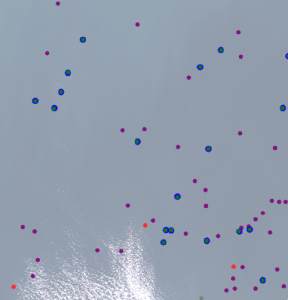Preparation of enabling space technologies and building blocks: REMIS - REal-time Maritime Intelligence from optical Satellite imagery
Programme
GSTP
Programme Reference
GT17-137TIid
Prime Contractor
SCIENCE AND TECHNOLOGY AS
Start Date
End Date
Status
Closed
Country
Norway

Objectives
Objective(s):
•Adapt a machine learning-based ship detection system known to work in ground segment to function in real time on board.
•Develop proof-of-concept, tutorial-like build setup and demonstrator that can introduce ordinary software engineers to on-board processing, using inexpensive development hardware (yet software/firmware-equivalent to existing space-grade hardware).
•Text.
Description
Background and justification:
•Instrument data volume of high-resolution imagers with wide field-of-view far exceeds downlink capacity.
•Ocean imagery is therefore down-prioritized (instrument off) to limit downlink, since the only interesting content is ships.
•The ships could be detected with on-board processing, but on-board processing is highly constrained, uses expensive space-grade FPGA computing hardware and requires highly specialized engineers.
Achievements and status:
•On-board machine learning-based ship detection is feasible, also for new imaging instrument (for which no training imagery exist).
•Relatively complex image preprocessing (calibration-, orthorectification) is implemented relatively straightforwardly in FPGA by simplifying typical Level 1 and Level 2 algorithms developed for ground segment.
•PetaLinux/Yocto-based build system with the necessary patches for rapid iterative development: FPGA bitstream update without rebooting, interactive driving code using Python, visualization of results on screen (DisplayPort).
•Still room for improving ship detection accuracy by adopting more complex detection model architectures.
Benefits:
•Progress towards “instrument always on” operations concepts that maximize the exploitation of the satellite.
•Progress towards near-real-time monitoring of the oceans.
•Reduce steepness of learning curve for on-board software engineers.
Application Domain
GEN-Generic Technologies
Technology Domain
1-On-board Data Subsystems
Competence Domain
3-Avionic Systems
Initial TRL
TRL N/A
Target TRL
TRL N/A
Achieved TRL
TRL N/A
Public Document
Executive Summary
